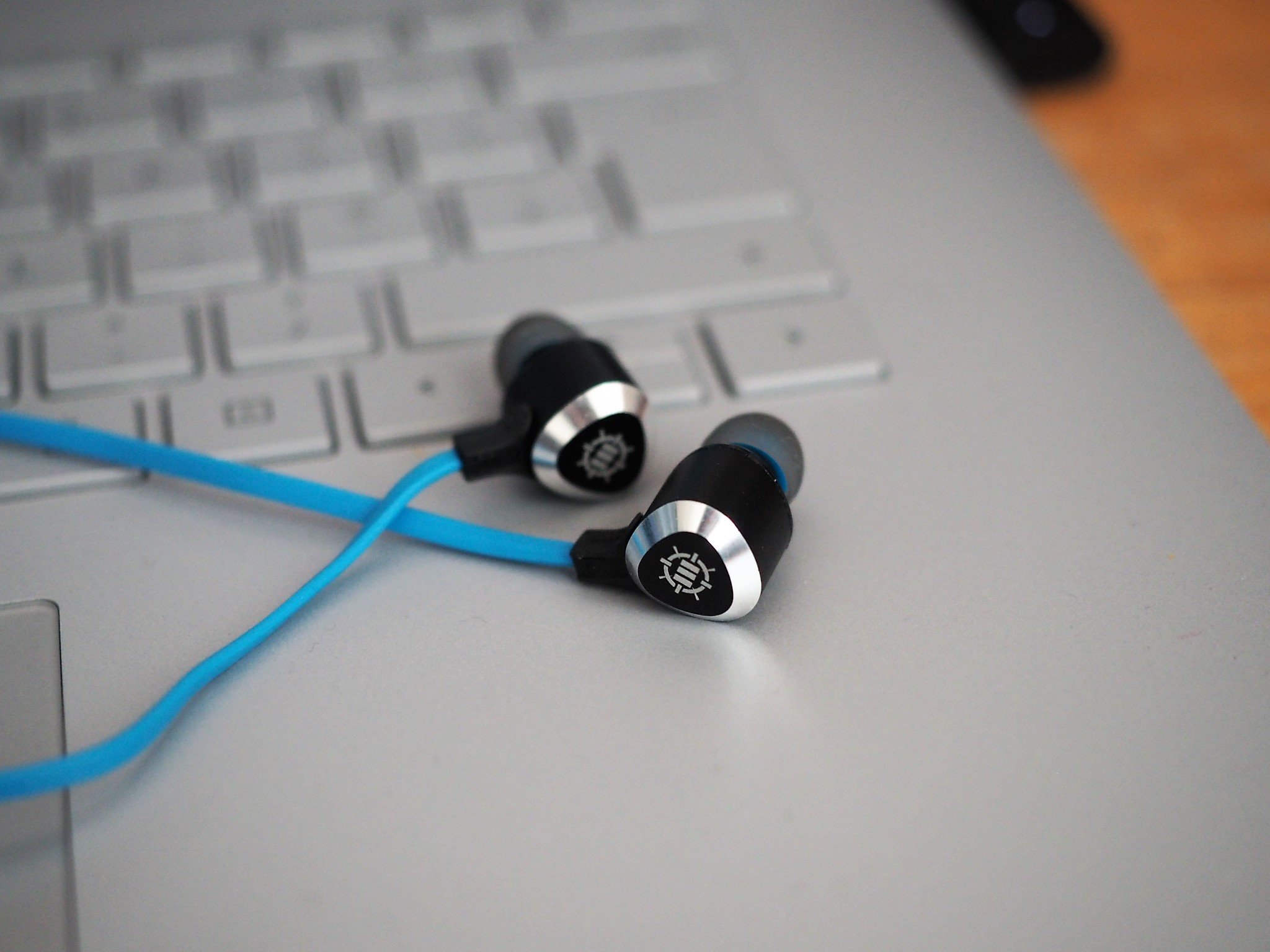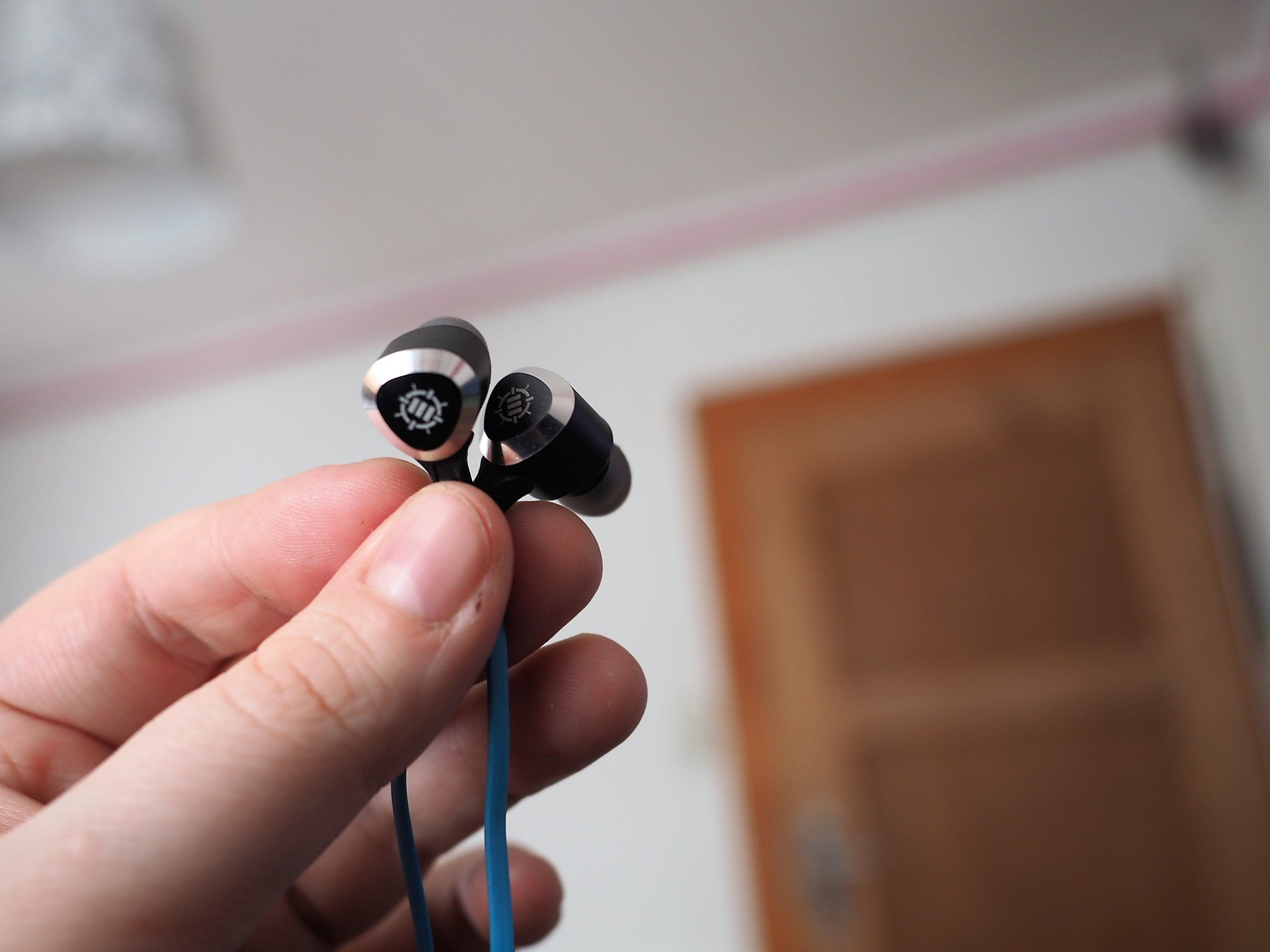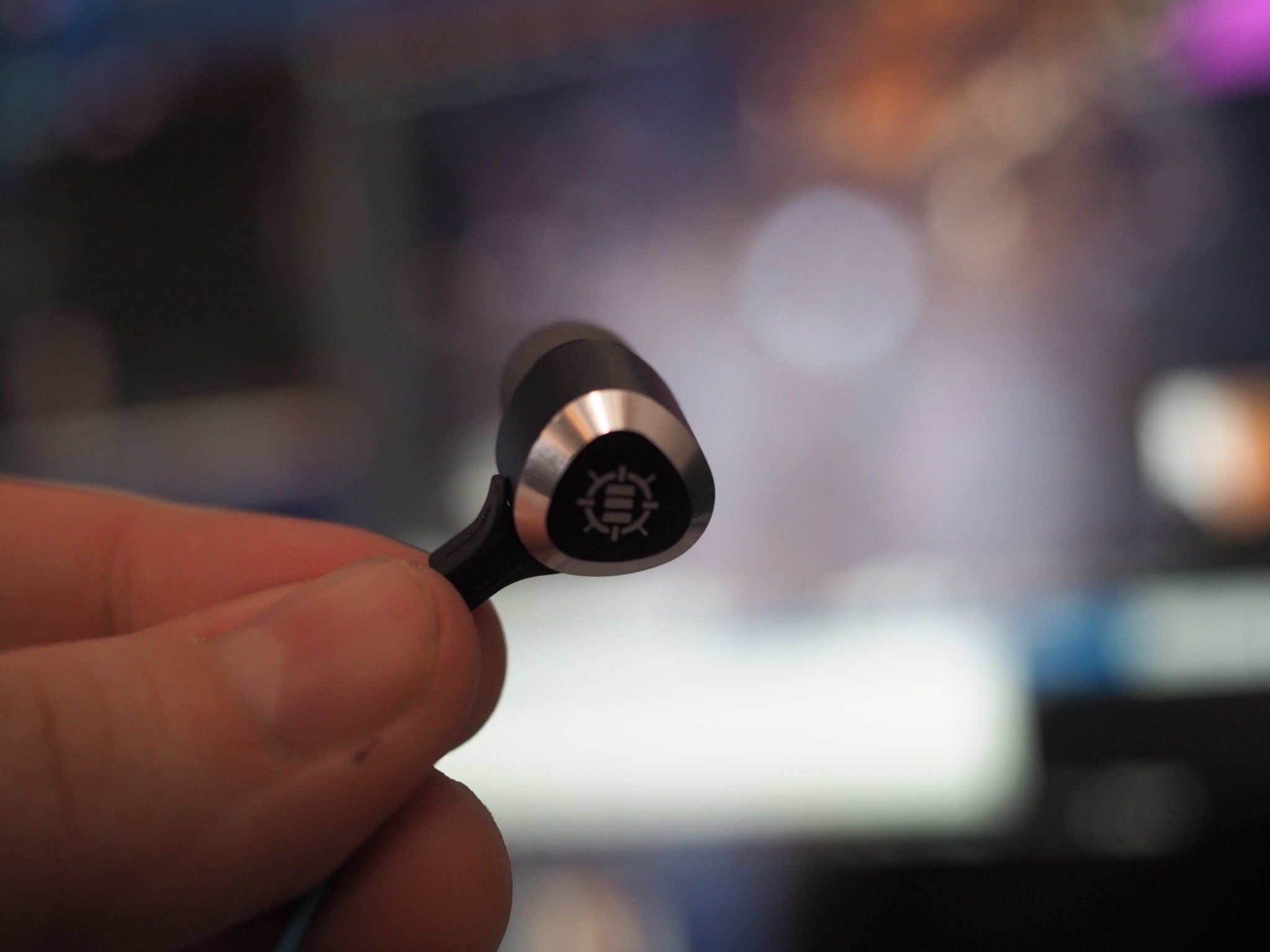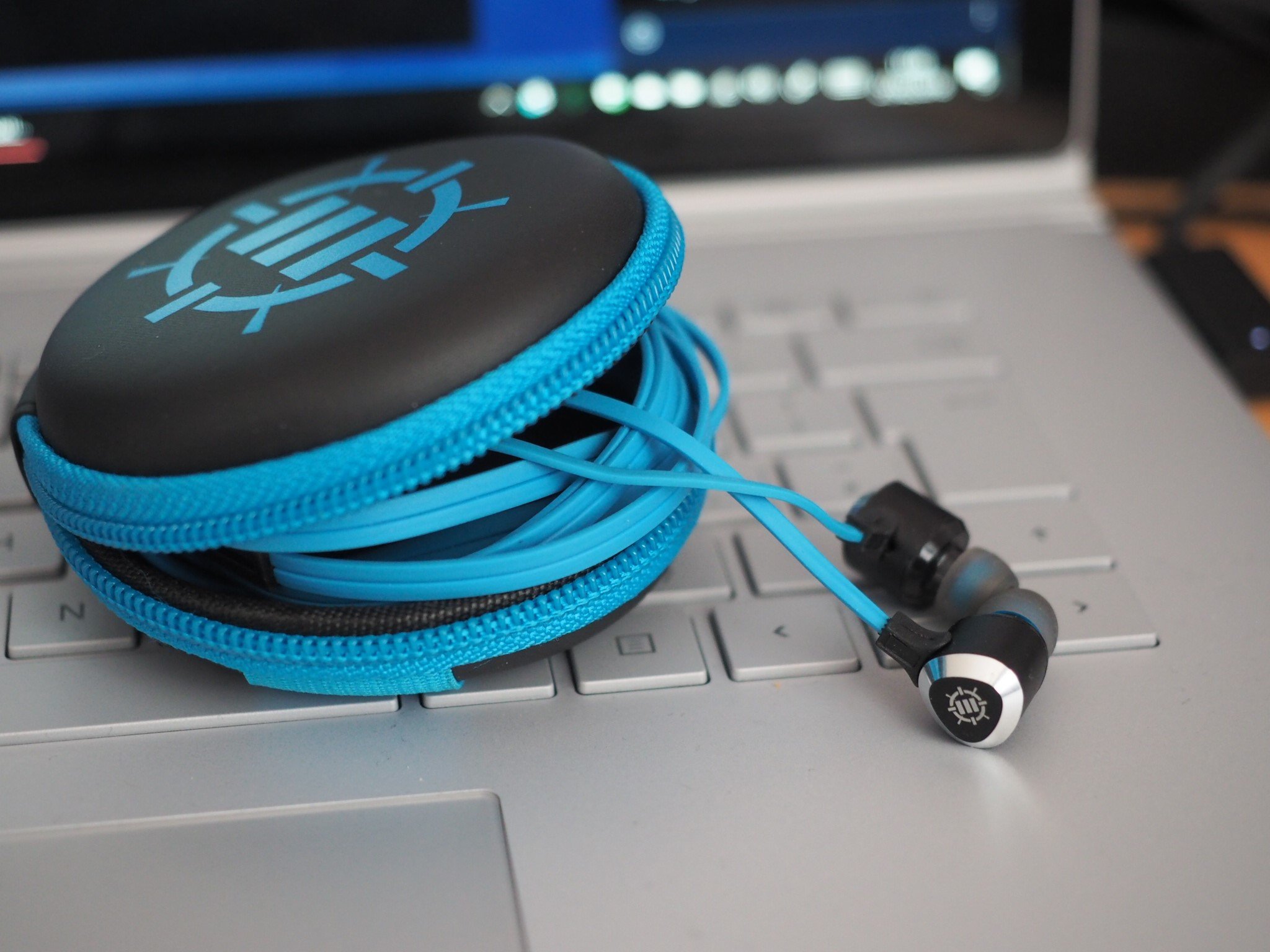
When I first heard about Enhance Gaming's "Tactical Vibration" headphones, I was skeptical. Now that I've gone ears-on, I have to say, they're something special.
Enhance Gaming makes a wide array of relatively affordable-looking gaming products, from mouse mats to keyboards and headsets. Recently I got the opportunity to try out Enhance's intriguing Vibration Gaming Earbuds, as they're titled on the company's website, and came away (somewhat) impressed.
Enhance Gaming Tactical Vibration headphone tech specs
- Impedance: 7 Ohms
- Frequency range: 20 Hz to 20KHz
- Connection: 3.5mm
- Cable length: 48 inches
- Mic: In-line, omnidirectional
- In the box: Hardcase, split PC audio/mic cable, additional silicone in-ear options
- Price: $30
Design and quality

As far as $30 headsets go, I'm quite impressed with the overall feel and quality of this product and have certainly experienced worse at this price point. The cables and accents are bright blue, with no additional options. For a headset you can potentially wear outdoors, it might have been smarter to go with a neutral black for those who are picky about color, but it's no big deal.
The cables are flat and broad, which provides some nice tangle protection, complete with an in-line microphone with a call answering button. It's a shame they couldn't find room for volume controls or mic muting, which in my opinion are pretty crucial for any gaming headset, but I suppose you can always add that in with a product like Turtle Beach's Xbox audio controller. This headset utilizes 3.5mm interfacing, making it compatible with the more up to date Xbox One controllers, most PCs, and phones. The box even includes a split mic and headphone cable if you're using an older PC.
Additionally, they include a hard case and three different widths of noise-isolating silicone gels, supporting various ear shapes and sizes. They also come with in-ear supports, but I found them to be a little uncomfortable (thankfully, they can be removed).
The earbuds themselves are made of anodized aluminum, which not only looks nice but feels durable. I suppose the material was chosen to be more conductive for the vibration functionality, but the downside is they can get pretty cold, which is quite jarring when you first place them in your ear. Additionally, the rubber that connects the earbuds to the cable has sharp corners and edges, which is actually quite uncomfortable if positioned improperly.
Overall, though, the headset is built well and feels fine when in-use.
Audio and vibration

Wait, what? They vibrate? Well, sort of. They offer tactile feedback on bass notes, which is billed as enhancing sounds like gunfire, explosions, and other types of mechanical audio. And the effect is remarkable.
Battlefield 1 is my go-to title for testing audio in games. And Battlefield 1 was a completely new experience with these humble earbuds. Every bullet ricochet, every exploding tank and shell, accentuated by surprisingly-subtle tactile feedback, added an extra dimension to play.
When I first heard about these earbuds, I had imagined the broad (and possibly annoying) rotary vibrations of an Xbox One controller in your ear, but this is anything but. The feedback is quite subtle and sharp, adding a physical quality to those dramatic sound effects. The effect is surprisingly powerful, dare I say desirable, but as a gaming headset, I'm not sure I would choose this instead of an over-the-ear solution.
The earbuds just don't provide the same wide soundstage I've become accustomed to with larger, more premium headsets. And while Dolby Atmos and Windows Sonic software surround sound can provide some degree of positional awareness, the benefits are limited in earbuds like these. Additionally, in-line microphones just don't offer the type of quality audio experience a real headset can provide, not to mention the fact the mic-monitoring on Xbox One can pick up the sound of the wires rubbing against your shirt.
The general sound quality of the earbuds is quite good, though. The bass is emphasized, perhaps to help it measure and deliver tactile feedback, and distortion isn't too bad, even at higher volumes. The issue is that there's simply no way to turn off the vibration functionality. Vibrations on gunfire and explosions might be desirable, but I certainly don't want them while listening to music. But there's no way to turn it off. The louder the bass, the stronger the vibrations, and there's no way to tweak or configure that strength.
Bottom line
Ultimately, what Enhance Gaming has is a really intriguing proof of concept that is missing far too many features to be a solution for many, if not most, gamers. It feels almost like a prototype, but the one thing Enhance has nailed with this product is the tactile feedback in games.
Pros:
- Solid audio.
- Decent price.
- Tactile feedback is quite awesome.
Cons:
- Missing features gamers need.
- Can't turn off feedback for music.
The tactile feedback is truly a compelling solution that I hope the company (or others) explore in the future, but the lack of basic every day features, like in-line controls, make this product hard to recommend. If you have some cash to splash, and you're an audio fan looking to try out something new, you'll enjoy this product for what it is.

Jez Corden is the Executive Editor at Windows Central, focusing primarily on all things Xbox and gaming. Jez is known for breaking exclusive news and analysis as relates to the Microsoft ecosystem while being powered by tea. Follow on Twitter (X) and Threads, and listen to his XB2 Podcast, all about, you guessed it, Xbox!

